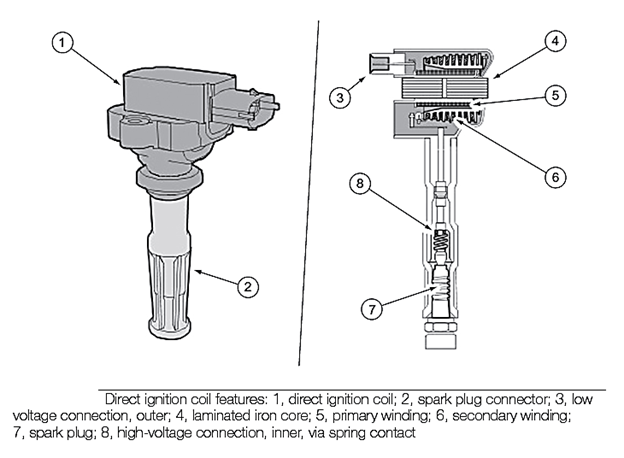←
Automobile Engineering
Coil On Plug (Cop) Direct Ignition System
Introduction:
Direct ignition has a coil for each spark plug. Direct ignition is, in a way, a further improvement on distributor less ignition.
This system utilizes an inductive coil for each engine cylinder.
Six direct ignition coils in position:
- These coils are mounted directly on the spark plugs.
- The use of an individual coil for each plug ensures that the charge time is very fast (full coil charge in a very small dwell angle).
- This ensures that a very high-voltage, high energy spark is produced.
- This voltage, which can be in excess of 40 kV, provides efficient initiation of the combustion process under cold starting conditions and with weak mixtures.
- Ignition timing and dwell are controlled in a manner similarly to the previously described ESA system.
- The one important addition to this on most systems is a camshaft sensor to provide information as to which cylinder is on the compression stroke.
- A system that does not require a sensor to determine which cylinder is on compression (engine position is known from a crank sensor) determines the information by initially fi ring all of the coils.
- The voltage across the plugs allows measurement of the current for each spark and will indicate which cylinder is on its combustion stroke.
- This works because a burning mixture has a lower resistance. The cylinder with the highest current at this point will be the cylinder on the combustion stroke.

A further feature of some systems is the case when the engine is cranked over for an excessive time making flooding likely. The plugs can all be fi red with multisparks for a period of time after the ignition is left on to burn away any excess fuel. During difficult starting conditions, multisparking is also used by some systems during 70° of crank rotation BTDC. This assists with starting and then once the engine is running, the timing will return to its normal calculated position.